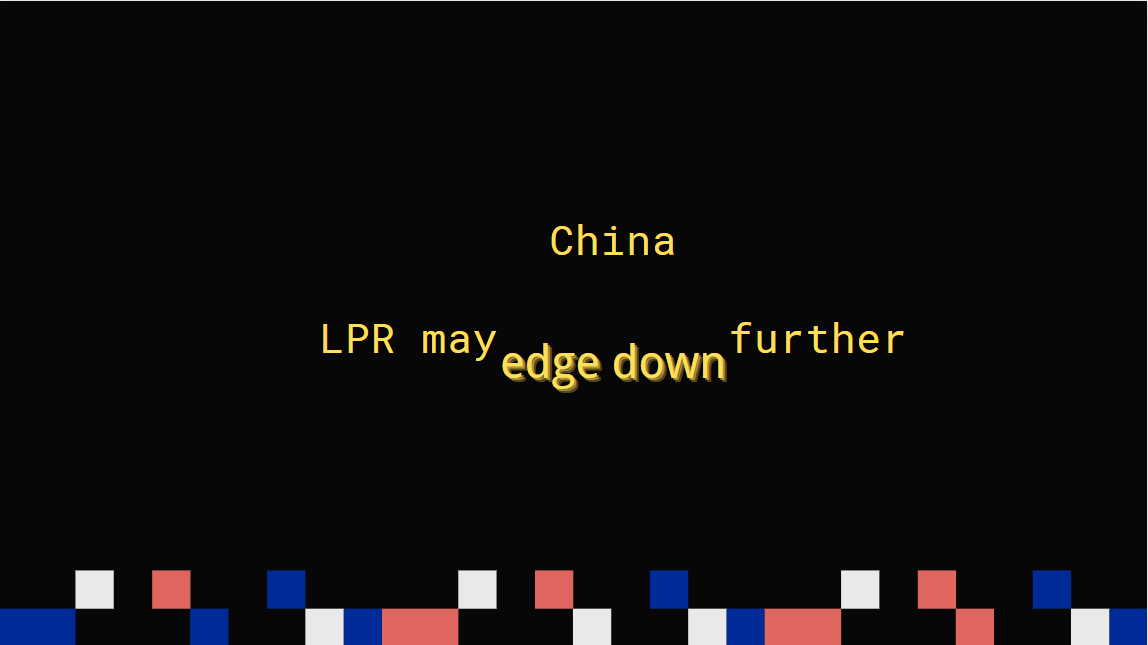Plenty of room for policy adjustment going forward
We expect a 0.5 to 1 percentage point reserve requirement ratio cut in 2023.
In 2022, the base money supply has played an important role in filling liquidity gaps. At the end of September, the base money supply increased 5.4 percent year-on-year, a major difference from the 0.3 percent contraction at the end of 2021.
In the first three quarters, the People's Bank of China, the country's central bank, adopted a number of measures including submitting 1.13 trillion yuan ($162.6 billion) of balance profits and using structured re-lending tools to bolster the base money supply.
If the PBOC's submitted profit drops sharply in 2023 amid weakening exports and contracting foreign exchange deposits, demand for RRR cuts to supplement the base money supply may be stronger than in 2022 in order to maintain steady growth of M2. One major reason for this is the longer time needed for expanding re-lending and rediscounting.
On Nov 25, the PBOC announced that it would cut the RRR by 0.25 percentage points starting from Dec 5. The weighted average deposit reserve ratio of financial institutions therefore stands at around 7.8 percent.
The RRR cut released about 500 billion yuan of long-term capital into the market, which can reduce the capital cost of financial institutions by about 5.6 billion yuan per year.
But it should also be pointed out that the 7.8 percent weighted average deposit reserve ratio of financial institutions after the latest RRR cut has come closer to the "hidden lower limit" of 5 percent. This can be considered a possible constraint for further RRR cuts in 2023.
The recent RRR cut may not directly guide commercial banks to lower loan prime rate quotations. But based on supply and demand between deposits and loans, the LPR may be further reduced.
We estimate that every 1 percentage point of RRR cut can lead to a 5 basic points decline in the LPR quotations of commercial banks. But after the reform of the deposit rate pricing mechanism in June 2021, time deposits follow changes in the 10-year government bond interest rate and the 1-year LPR. Given the high deposit growth at present and insufficient loan demand, we believe that LPR may be further reduced in order to better balance supply and demand for both deposits and loans.
The time window to lower the medium-term lending facility rate may exist in the second quarter of 2023.
Lowering the MLF rate is the most direct and effective means for lowering costs. However, in the context of the gradual formation of a price-based monetary policy regulatory framework, the adjustment of the MLF rate may have a bigger-than-expected impact. In other words, internal and external constraints should be thoroughly considered before making any MLF cuts.
It is not likely that China's consumer price index will reach a near-term high in the first quarter of 2023. The difference in economic growth between China and other economies will gradually reverse around the second quarter. Global capital flows will tend to ease by that time, providing more room for interest rate cuts in China. If the economic recovery is not on a par with expectations by that time, the PBOC may moderately lower the MLF policy rate to further increase support for the real economy.
The PBOC's decision to implement the RRR cut on Dec 5 is mainly based on four considerations. The deterioration of economic fundamentals is the most important factor.
Affected by pandemic resurgences across the country, most of China's major economic indicators declined in October. Industrial production and the services sector were sluggish. Retail sales of consumer goods shed 0.5 percent year-on-year in October, falling into negative territory again after four months of growth. The drop in retail sales of goods and catering was especially significant. Both China's imports and exports showed negative year-on-year growth in October, and the pressure of slowing external demand has already emerged. Due to the slowdown in infrastructure, manufacturing and real estate activity in October, the year-on-year growth rate for fixed asset investment was 5 percent in October, down from 6.5 percent in September.
The central government's outlook for fourth-quarter economic growth has changed. According to the State Council's executive meeting on Oct 26, efforts should be made to make sure fourth-quarter economic growth outperforms that of the previous quarter. But the message delivered at the State Council's executive meeting on Nov 22 was to "keep economic growth within a reasonable range and strive to achieve better results".
It can be seen that the current downward pressure on the economy has mounted significantly and China's economic growth fell again in November. Therefore, the main consideration for this latest RRR cut is to increase financial support for the real economy against the backdrop of a rising pandemic.
Second, the latest RRR cut can signal a still relaxed monetary policy while ironing out liquidity volatility.
Although the bond market has stabilized recently, selling pressure on credit bonds has not completely lifted and market confidence still needs to be restored. In addition, the maturity of the MLF in December this year and January 2023 will reach 500 billion yuan and 700 billion yuan, respectively. Coupled with factors such as the upcoming Spring Festival and the issuance of local government bonds, liquidity of the bond market may be easily disturbed again.
In the third-quarter monetary policy implementation report, the PBOC pointed out that the release of medium- and long-term capital via RRR cuts will help smooth liquidity and prevent another major adjustment in the bond market.
Third, many policies have been introduced recently to stabilize the real estate market, and the RRR cut will help commercial banks provide bigger credit support.
Central government bodies including the PBOC, the China Banking and Insurance Regulatory Commission and the Ministry of Housing and Urban-Rural Development have rolled out a number of financial policies to support financially distressed real estate companies. Among these is a 200 billion yuan interest-free loan support plan provided by the PBOC to six commercial banks to facilitate the construction of unfinished property projects. At present, the six major State-owned commercial banks have extended credits exceeding 1 trillion yuan to 17 real estate companies. Market liquidity may gradually tighten as loans are provided. Therefore, the latest RRR move serves to facilitate the implementation of supportive policies for the real estate sector.
Fourth, there are rising expectations that the US Federal Reserve will slow down its interest rate hikes. The external constraints on China's monetary easing have weakened.
According to data released by the US Department of Labor, the US CPI grew 7.7 percent year-on-year in October, which was lower than market expectations of 7.9 percent. It is the fourth consecutive month that the indicator reported a decline.
The core CPI in the US increased 6.3 percent year-on-year in October, lower than market expectations of 6.5 percent and reporting a drop for the first time in five months.
The bigger-than-expected decline in US inflation levels has cooled down market expectations of further interest rate hikes. The recently announced Fed November minutes released "dovish" signs, showing that most participants believe that it may be an appropriate time to slow down the pace of interest rate hikes.
We expect that the Fed will raise interest rates by 50bps in December, smaller than the 75bps hike each time adopted earlier this year. The external factors affecting China's monetary policy have weakened, which also provides a favorable environment for the latest RRR cut.
The writers are Zhong Zhengsheng, chief economist at Ping An Securities Co Ltd and director of the China Chief Economist Forum, and Zhang Deli, Zhang Lu and Li Xiaojian, all analysts at Ping An Securities.






















































First, please LoginComment After ~